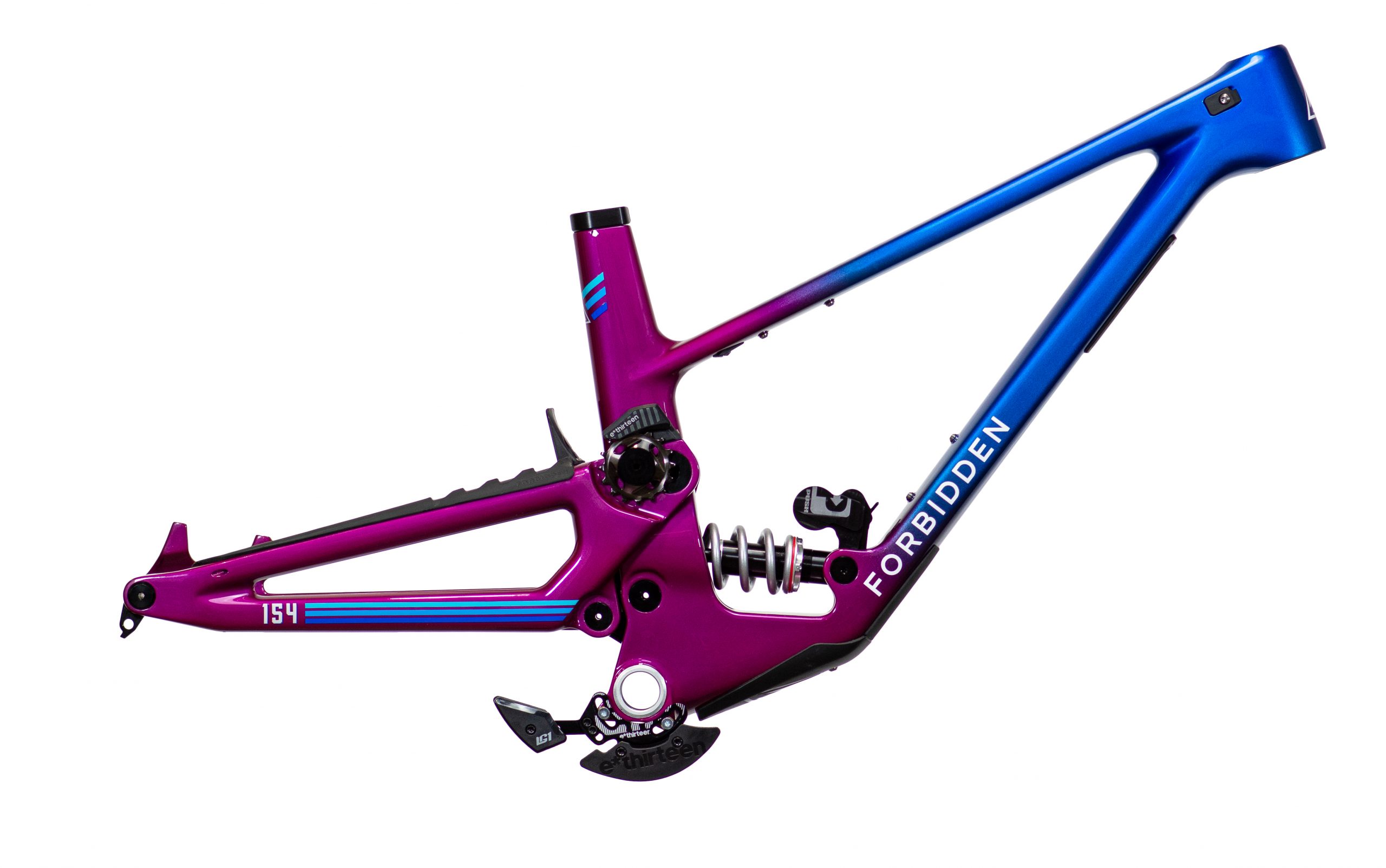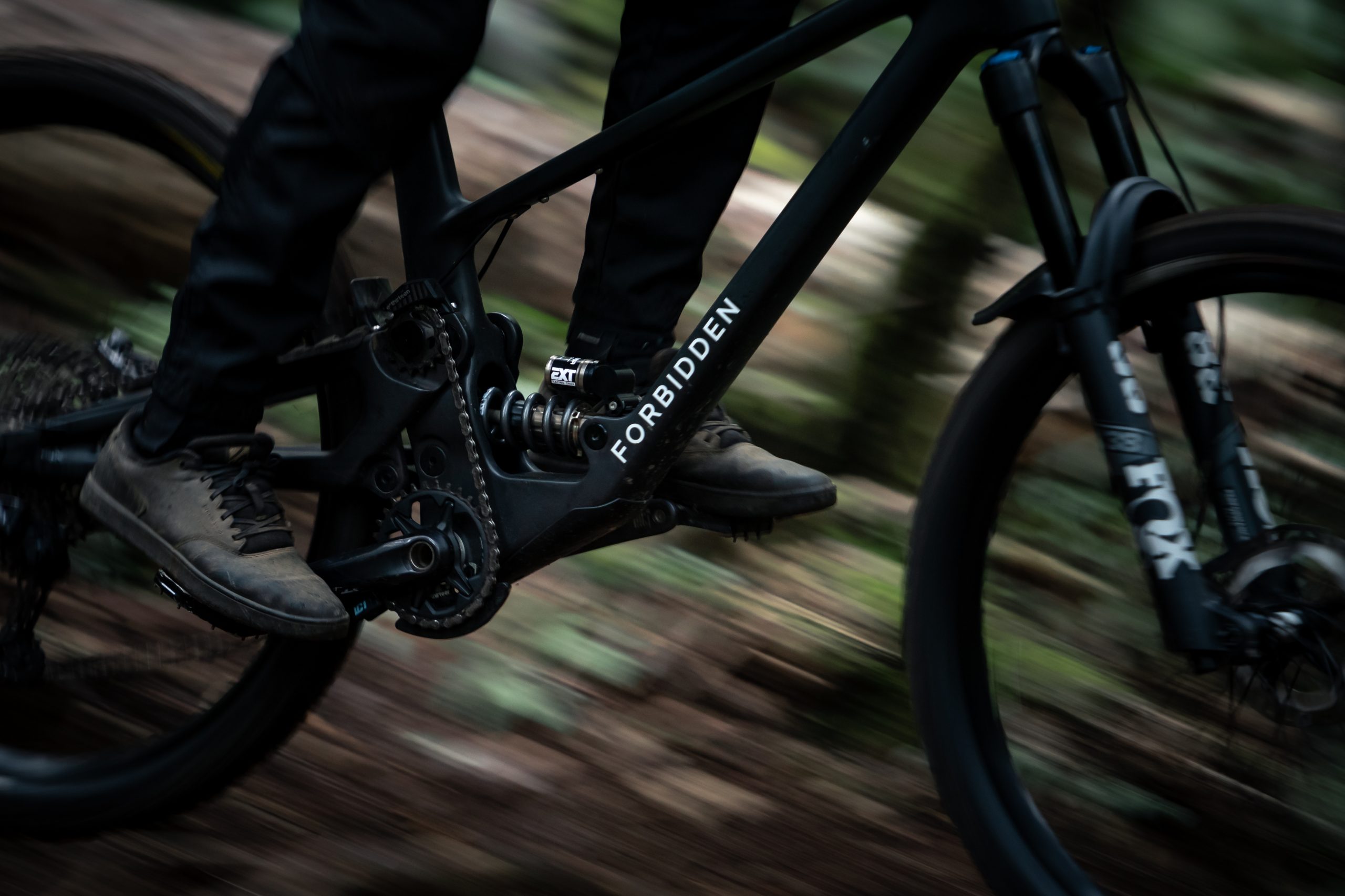New enduro-slash-bike-park Forbidden Dreadnought is a 154mm high-pivot idler bike that apparently fears no climb, nor any descent. Let's check it out...
The Forbidden Dreadnought takes the brand’s cult Druid trail bike and turns it up to 11. Or up to 154mm anyway. It also adds a bit more slackness and longness. Is longness even a word? Well, it is now. We’ll deal with the pros – and potential cons – of the High Pivot idler-ed suspension design later on. Chances are most of you reading this will already know the score. For now let’s get to the point. How is this bike different from the Forbidden Druid?
Read more: Best enduro mountain bikes in 2021 – 150 to 170mm travel bikes

Forbidden Dreadnought need to know
- Enduro or bike park MTB
- 154mm rear travel
- 170mm fork travel
- High-pivot idler suspension design
- 29er or mullet (via Ziggy link)
- Boost 148
- Size-specific geometry
- Sizes S, M, L, XL
- Frames from £3299 (available this month)
- Complete bikes from £4899 (available spring 2021)

For a start, it is not very different at all in terms of suspension layout. Or even suspension leverage curve. The curve charts may look a bit different between the Dreadnought and the Druid but this is mostly because the fomer has more travel than the latter. If we were to equalize the X-axis (travel) on the charts, the curves are very close to each other. Forbidden know how they like their bounce to behave and they’re sticking with it. Makes sense. The suspension feel is very much the USP of Forbidden after all. The new Dreadnought is arguably a bit more capable of running a coil shock due to its inherently more progressive end stroke. Which, again, makes sense when dealing with a longer travel, gravity-biased bike.

No matter what sort of jiggery pokery is going with suspension, the main thing dictating how any mountain bike behaves is its geometry. And it’s here that the Dreadnought is more clearly delineated from the Druid. The Dreadnought has approximetaly 20mm longer reach than the Druid. Its head angle is two degrees slacker. Its wheelbase is around 60mm longer. The effective seat angles and BB heights are pretty similar (75.6° v 76°, 340mm v 337mm).

The Dreadnought’s seat angles and rear-centres (AKA chain stay lengths) are worth highlighting. No, the use of plural nouns is not a mistake; Forbidden change the actual seat angles and rear-centres with each frame size. The result being that the effective seat angle remains constant no matter what frame size (76°). The chain stays grow 14mm with each frame size increase. The aim of the game here being to maintain the rider’s fore-aft balance point on all frame sizes. No more lanky riders looping out on steep climbs. No more petite pilots being unable to manual. This height-specific geometry is to be applauded and the designers at Forbidden have a long history (at Norco in fact) of pioneering the concept.

Right then, High Pivot idler time.
The Dreadnought’s main pivot is higher up the bike’s seat tube area than a conventional design. This high pivot means the swingarm makes the rear wheel move more backwards than conventional designs. This means it eats lumps and bumps better and general momentum is less slowed-down.
High pivots have problems. Namely, pedal kickback. This is where the cranks need to rotate backwards to allow the rear wheel to move backwards (and upwards). Obviously cranks can’t freely rotate backwards because they have a rider standing on them.
The use of an idler gets around this kickpback problem. Kickback is not entirely removed but it is hugely reduced.
Idlers have problems. Namely, a lack of anti-squat. Anti-squat is where the suspension firms up under pedaling input. Just like too much anti-squat can be a problem, so too is too little anti-squat. Bikes without much anti-squat (some older 4-bar designs for example) basically bob around and offer a distinct lack of support when trying to pump the trail too.
Hang on though. If you look, you will notice that Forbidden don’t put the idler in the same exact spot as the pain pivot. The main pivot is positioned forward of the idler. This gives the design a given amount of anti-squat. Around 120% anti-squat at sag point (45mm) to be precise.
High-pivot idler bikes can often feel excessively stuck-to-the-floor for some tastes. This can make them a hard sell as trail bikes. But for longer travel enduro or bike park bikes, the issue may not be so significant.
Unlike some high pivot idler bikes of yore, Forbidden bikes are not plain single-pivots; they have linkages driving the shock. These Rate Control Linkages very much have a say in how the bike rides too.

Obviously, the proof will be the pudding of actually test riding a Forbidden Dreadnought. But for now, the bike looks great on paper. We look forward to giving one a thrashing whenever the year of 2021 actually allows this to happen.



